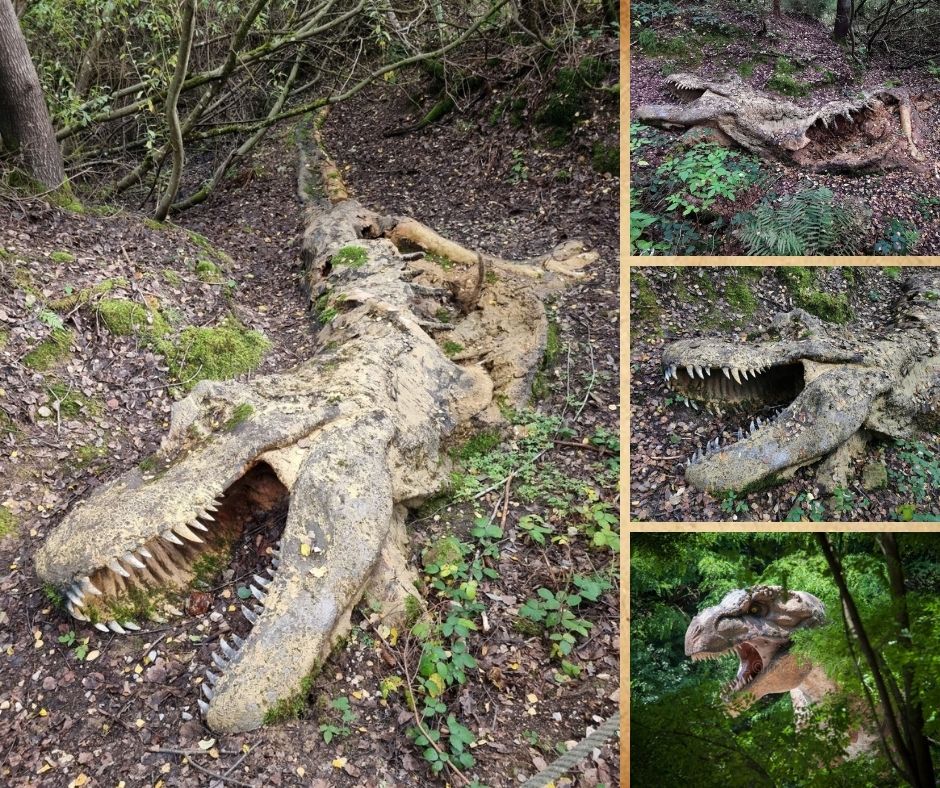What if we told you that deep in the Amazon jungle, archaeologists stumbled upon something so perfectly preserved it’s being called a “real-life dinosaur mummy”? Sounds like science fiction—but the story gets stranger from here.
In recent days, social media has exploded with images and claims about a dinosaur fossil discovered in the heart of the Amazon—complete with intact skin, teeth, and even internal organs. Some say it’s the most complete dinosaur ever found. Others whisper that it could unlock secrets to prehistoric life—or even genetic resurrection.
But is it real? Could a 77-million-year-old creature remain so flawlessly intact? Or is this viral sensation just another internet myth dressed up in the language of science?
Before you dismiss it as a hoax or share it as fact, dive into the full story. We’ve traced the origins of the claim, spoken with museum experts, and uncovered what’s really behind the most buzzed-about “discovery” of the year.
This is more than a viral headline—it’s a fascinating case of science, speculation, and how fast truth can get buried under excitement.
What the Viral Claim Says

According to the widely circulated posts, archaeologists allegedly stumbled upon a perfectly preserved dinosaur called a “сасаs” in the Amazon. Supposedly, the find is so pristine that scientists are calling it the most intact dinosaur ever found. The story goes on to claim that the creature’s skin, bones, and even some organs remained untouched by time—and that experts are now studying its DNA with the goal of reviving the species.
This narrative is filled with exciting buzzwords: dinosaur mummy, genetic restoration, ancient species. But as it turns out, the entire story is fiction.
No Scientific Evidence of This Discovery

First and foremost, no official paleontological institution or peer-reviewed journal has reported the discovery of a preserved dinosaur in the Amazon. There are no academic records, no museum statements, and no news from scientific bodies such as the American Museum of Natural History or the Smithsonian National Museum of Natural History.
In fact, many versions of the viral claim seem to recycle content from an earlier April Fool’s joke, including false attribution to institutions like the “NC Natural History Museum in Raleigh”—an entity that does not exist.
Furthermore, the dinosaur’s name “сасаs” is not a recognized genus or species in any paleontological record.
Real Dinosaur “Mummies” Do Exist—But Not Like This

The term “dinosaur mummy” is occasionally used in science to describe exceptionally well-preserved fossils that retain impressions of soft tissue or skin. A great example is the nodosaur fossil discovered in Alberta, Canada, which has been hailed as one of the best-preserved dinosaur specimens ever found. The fossil was encased in sandstone and preserved for over 110 million years.
However, even in that case, what scientists found were mineralized tissues, not actual skin or DNA. Over time, soft tissues degrade and are replaced by minerals in a process called fossilization. You can read more about this incredible specimen from National Geographic’s official coverage.
Can Dinosaur DNA Be Extracted?
The short answer: No—at least not with current science.
DNA degrades over time. Even under ideal preservation conditions, DNA has a half-life of about 521 years. After several million years, it becomes completely unreadable. Because dinosaurs went extinct around 66 million years ago, there is no viable dinosaur DNA that scientists can extract or sequence today.
Even a breakthrough study published in Nature Communications confirmed that the likelihood of recovering usable DNA from dinosaur bones is virtually nonexistent. You can read that study here.
The Amazon Rainforest Is Not an Ideal Fossil Site
Another red flag in the viral claim is the alleged location of the discovery: the Amazon rainforest. While South America has yielded many fossil finds—particularly in Argentina, Brazil, and Patagonia—the Amazon rainforest is not known for producing well-preserved fossils.
Why? The humid, acidic soil and rapid organic decay in tropical environments make fossilization highly unlikely. Fossils are more commonly found in sedimentary rock layers and arid environments, where preservation is possible over millions of years.
For example, many dinosaur fossils in South America are from the Neuquén Basin and Bauru Basin, not from tropical jungles. For more, visit the Paleobiology Database or the Brazilian Society of Paleontology.
So Where Did the Hoax Come From?
The story about a dinosaur mummy in the Amazon appears to be a modified version of a 2017 April Fool’s article and subsequent meme culture around bringing dinosaurs “back to life.” It was also inspired in part by the Appalachiosaurus, a real genus of theropod dinosaur found in the southeastern United States.
There was no discovery in Pisgah National Forest, no creature transported by a “flooded river,” and certainly no active DNA reintroduction program. These are simply imaginative storytelling elements used to craft a compelling—yet entirely fictional—narrative.
What Are Scientists Really Doing?
While you won’t see Jurassic Park-style cloning any time soon, real science is still making incredible strides in paleontology. Recent discoveries have helped researchers better understand dinosaur behavior, metabolism, and even the evolution of feathers.
For example:
-
Scientists have discovered pigment cells in fossilized feathers, helping reconstruct what dinosaurs may have looked like in color (ScienceMag.org).
-
Studies of fossilized footprints have given insight into herd behavior and migration patterns of sauropods.
-
CT scans of fossil skulls are helping paleontologists better understand dinosaur brain structure and sensory abilities.
These real discoveries are often just as fascinating—if not more so—than the myths.
The Takeaway: Verify Before You Share
It’s easy to see why people fall for stories about perfectly preserved dinosaurs or the possibility of de-extinction. These stories play into our collective imagination, inspired by movies and pop culture. But science demands evidence—and in this case, there is none.
If you’re ever unsure whether a claim is true, check with:
Sources: